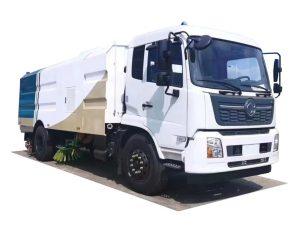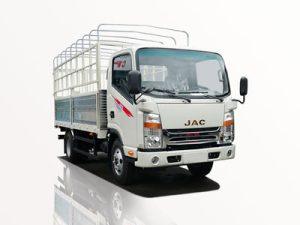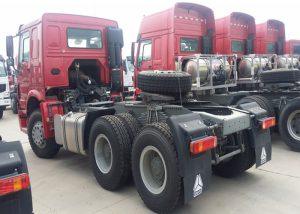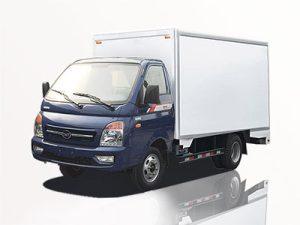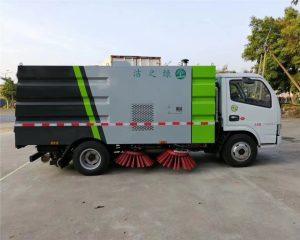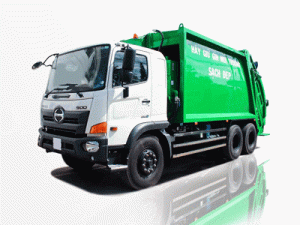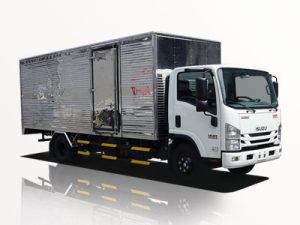Monday to Saturday - 8:00 -17:30
Understanding Flat Bed Tow Trucks: A Comprehensive Guide
Introduction
Flat bed tow trucks are essential vehicles in the towing industry, known for their distinct design and adaptability. They serve a vital role in transporting various types of vehicles, from cars to motorcycles and even commercial trucks. This article delves deep into the functionality, advantages, types, and essential considerations surrounding flat bed tow trucks, offering insights for both owners and users alike.
What is a Flat Bed Tow Truck?
A flat bed tow truck features a long, flat platform equipped with a hydraulic lift that can raise and lower the bed. This design enables vehicles to be driven onto the bed for secure transportation, making it ideal for towing damaged or inoperable cars. The flexibility and ease of use of flat bed tow trucks set them apart from other towing options.
How Do Flat Bed Tow Trucks Work?
Flat bed tow trucks operate using a hydraulic system that allows the bed to tilt and slide. After positioning the truck near the vehicle to be towed, the operator adjusts the bed to an incline, allowing the vehicle to be winched onto the flatbed. Once the vehicle is secured with straps or chains, the bed returns to a horizontal position, making it safe for transport.
Advantages of Flat Bed Tow Trucks
1. Versatility
Flat bed tow trucks can transport various types of vehicles, including cars, trucks, motorcycles, and construction equipment. This versatility makes them essential for recovery services, roadside assistance, and transportation companies.
2. Safety
Transporting a vehicle on a flatbed minimizes the risks of damage. The vehicle’s wheels remain off the ground, preventing wear on tires and reducing the likelihood of damage to the drivetrain and suspension. Additionally, the flat design allows for safer loading and unloading.
3. Easy Loading and Unloading
The inclined ability of the flat bed makes loading and unloading easier compared to traditional tow trucks, which often require complicated mechanisms like dollies and tow bars. This efficiency can save time and reduce physical strain on operators and customers alike.
4. Reduced Damage Risk
Since the vehicle remains secured on the flat bed without any part touching the road, the risk of further damage while being transported is immensely lowered. This is particularly important for high-value or classic cars.
Types of Flat Bed Tow Trucks
1. Conventional Flat Bed Tow Trucks
This standard model is best suited for most towing needs. The bed is usually around 12 to 22 feet long, depending on the specific model. Its simplicity makes it a popular choice among towing companies.
2. Extended Flat Bed Tow Trucks
These trucks have an extended frame and longer beds, allowing them to accommodate larger vehicles and equipment. They are particularly valuable in industrial applications.
3. Rotator Flat Bed Tow Trucks
Incorporating a rotating boom, these trucks offer enhanced recovery capabilities, enabling operators to retrieve vehicles from difficult positions, such as overturned situations or off-road recoveries.
4. Car Carrier Flat Bed Trucks
This type of flat bed is fully geared towards the automotive transport industry, often equipped with additional features for stability during transit, making them ideal for transporting multiple vehicles at once.
Important Considerations When Using Flat Bed Tow Trucks
1. Weight Limits and Capacity
Flat bed tow trucks have specific weight limits that should never be exceeded to ensure safety and vehicle integrity. It’s crucial for operators to be familiar with their truck’s capacity.
2. Vehicle Securing Techniques
Proper securing techniques are vital to prevent the vehicle from shifting during transport. Operators should use high-quality straps or chains and ensure the vehicle is centered on the flat bed.
3. Training and Safety Protocols
Operators must undergo training to handle flat bed tow trucks safely and effectively. This includes understanding the hydraulic systems, safe lifting practices, and emergency procedures.
4. Regular Maintenance
Routine maintenance checks on both the truck and the towing equipment are essential for preventing breakdowns and ensuring operational safety. Operators should routinely inspect the hydraulic systems, bed mechanisms, and overall truck condition.
How to Choose the Right Flat Bed Tow Truck
1. Assess Your Needs
Evaluate the types of vehicles you will commonly tow and determine your capacity needs. If you transport larger equipment, consider an extended model.
2. Budget Considerations
Flat bed tow trucks vary in price depending on their size and functionality. Establish a budget that fits your needs without compromising on quality.
3. Research Manufacturers
Investigate reputable manufacturers and compare features, warranties, and customer reviews. Check for service providers that offer good support networks.
4. Consider Used Vs. New
Both new and used flat bed tow trucks have their advantages. The primary benefit of buying used is cost savings; however, new trucks come with warranties and the latest technology. Weigh the pros and cons based on your situation.
Practical Tips for Operating Flat Bed Tow Trucks
1. Understanding Your Load
Always assess the vehicle’s weight and dimensions beforehand. Knowing your load helps you maintain safety and stability during transport.
2. Utilizing Proper Equipment
Invest in high-quality towing straps, chains, and winches. They are vital to securing vehicles and ensuring safe transit.
3. Practicing Safe Driving
Drive cautiously, especially when loaded. Be mindful of your stopping distance and avoid sharp turns. Heavy loads can shift and affect your control.
4. Communication
Maintain clear communication with your team during operations. When working with multiple operators, ensure everyone knows their roles and responsibilities.
Flat Bed Tow Trucks in Various Industries
1. Automotive Repair and Dealerships
Automotive repair shops often utilize flat bed tow trucks for transporting cars to and from service locations. This is especially helpful for high-end or delicate vehicles needing special care.
2. Construction and Heavy Equipment
Construction sites frequently rely on flat bed tow trucks to transport heavy equipment like backhoes and bulldozers, proving their versatility beyond just automotive use.
3. Roadside Assistance Services
Flat bed tow trucks are vital tools for roadside assistance companies, providing safe, quick, and efficient service for disabled vehicles.
4. Vintage and Luxury Car Transport
Flat beds are chosen for transporting classic cars due to their ability to avoid contact with the ground, thus reducing the risk of damage during transport.
FAQs
1. What is the typical weight limit for a flat bed tow truck?
The weight limit for most flat bed tow trucks ranges from 5,000 to 30,000 pounds, depending on the model. Always check your truck’s specifications for accurate capacity.
2. Can flat bed tow trucks tow motorcycles?
Yes, flat bed tow trucks are suitable for towing motorcycles. Many operators use specialized equipment to ensure the bike is secure during transit.
3. How do I secure a vehicle on a flat bed tow truck?
Vehicles can be secured using high-quality straps or chains. Ensure the vehicle’s wheels are tightly strapped and use additional safety measures to prevent shifting.
4. Are flat bed tow trucks more expensive than traditional tow trucks?
Generally, flat bed tow trucks can be more expensive due to their advanced features and hydraulic systems. However, their capabilities often justify the higher cost.
5. How often should I maintain my flat bed tow truck?
Routine maintenance should be conducted regularly, typically every 3-6 months, or as recommended by the manufacturer, to ensure safe operations.
6. What should I do in the event of a flat bed tow truck breakdown?
If your flat bed tow truck breaks down, ensure you are safely parked and contact roadside assistance. It’s essential to have a plan for such occurrences to minimize inconvenience and ensure safety.


